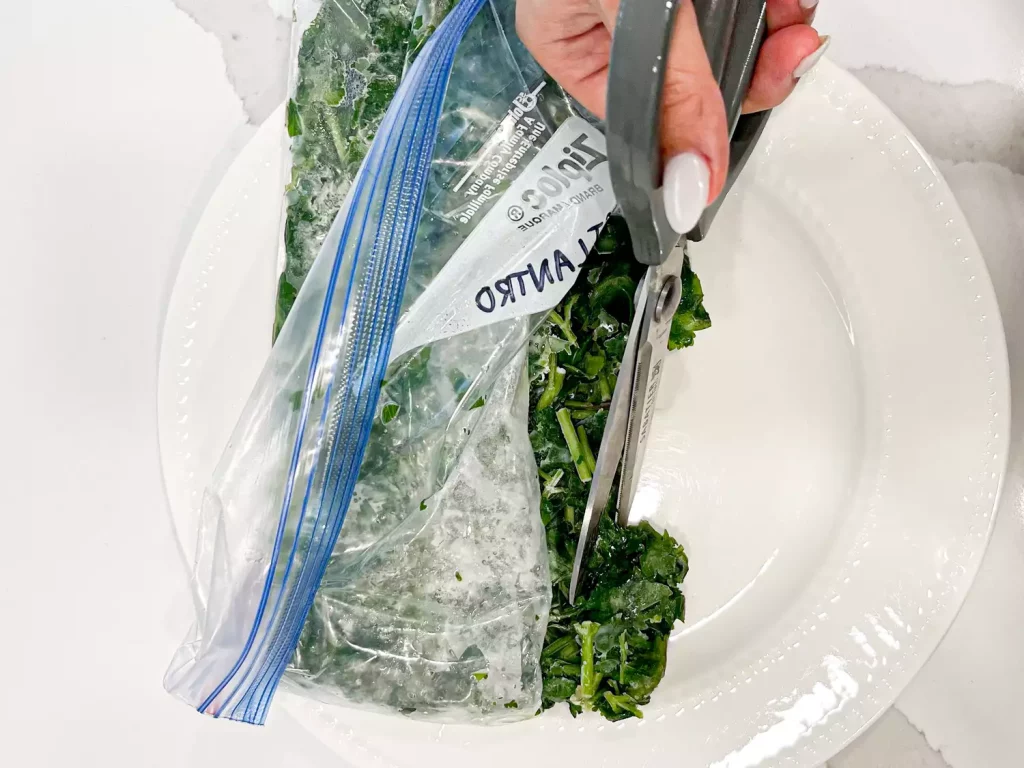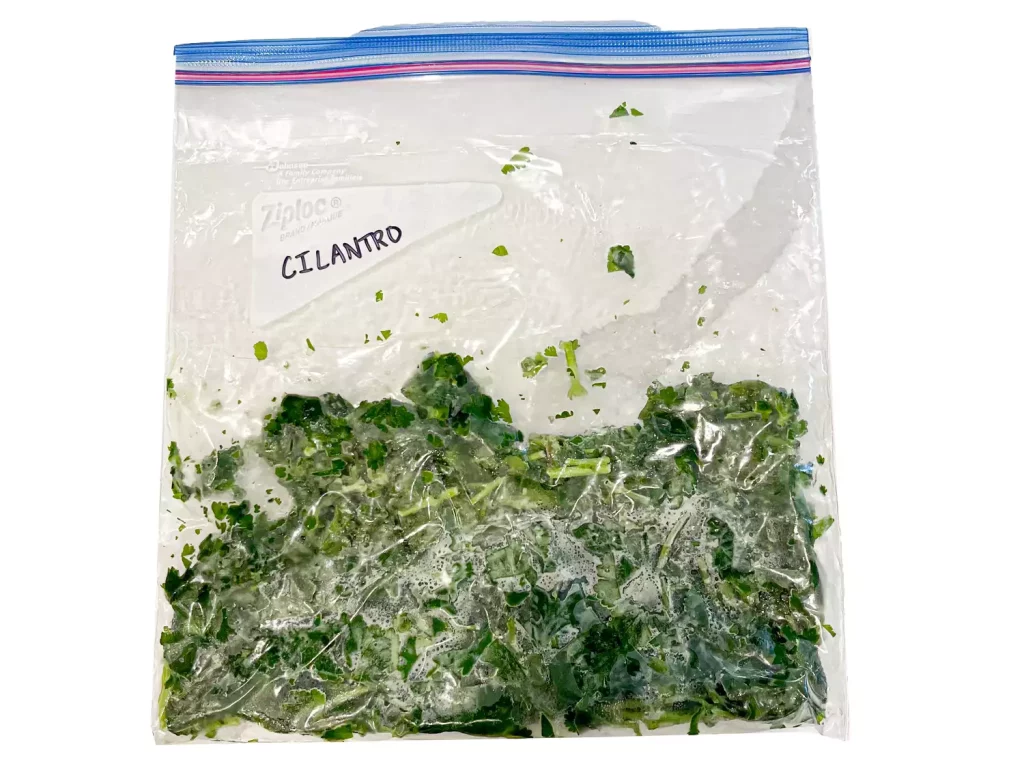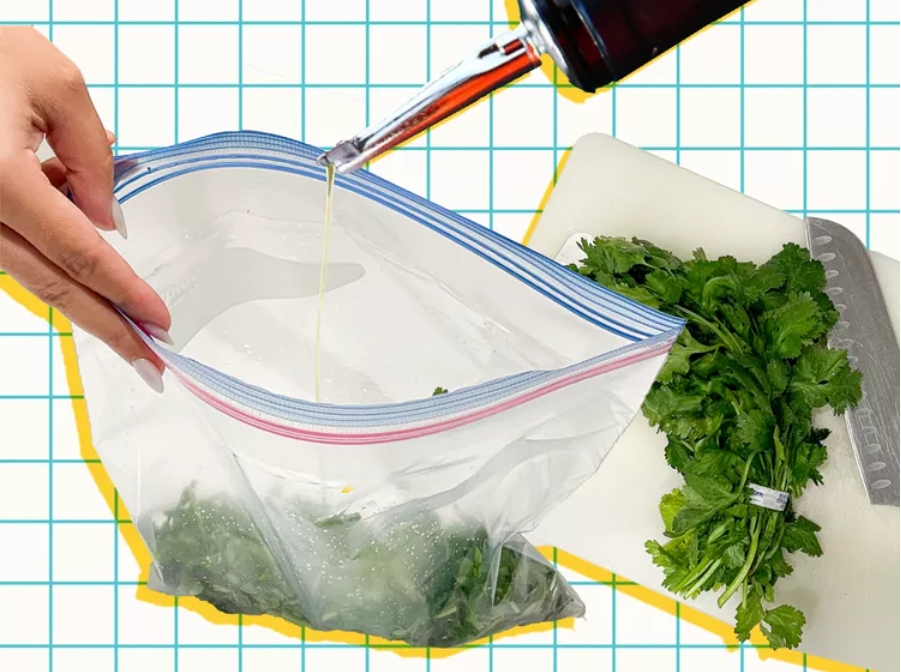Freezing herbs is a fantastic way to preserve their flavor and aroma, allowing you to enjoy them long after their growing season has ended. This method, known as freezing herbs flat, is particularly effective for maintaining the quality of your herbs, making them easy to store and use in a variety of dishes. This guide explores the benefits of freezing herbs, detailed steps to achieve the best results, and creative ways to use your frozen herbs.
1. Introduction to Herb Freezing
The Importance of Herb Preservation
Herbs are a vital component in cooking, providing fresh flavors and essential nutrients. However, their shelf life is relatively short, and they can quickly wilt and lose their potency. Freezing herbs allows you to extend their usability, preserving their vibrant flavors and nutritional value for months.
Benefits of Freezing Herbs Flat
Freezing herbs flat involves placing them in a single layer before freezing. This method offers several advantages:
- Preservation of Flavor: By freezing herbs flat, you prevent them from clumping together, making it easier to use only what you need.
- Space Efficiency: Flattening the herbs helps maximize freezer space, allowing you to store more herbs in a smaller area.
- Convenience: It simplifies portioning and access, as you can easily break off a section of frozen herbs when needed.
2. Choosing the Right Herbs
Popular Herbs for Freezing
- Basil: Ideal for freezing, especially for making pesto or adding to Italian dishes.
- Cilantro: Great for freezing, particularly if you want to use it in soups or stews.
- Parsley: Versatile and commonly used, parsley freezes well and retains its flavor.
- Chives: Perfect for adding to dishes like scrambled eggs or salads.
- Mint: Excellent for cocktails, teas, and desserts.
Herbs That Do Not Freeze Well
- Rosemary: Can become woody and lose flavor when frozen. Fresh rosemary is preferable for most recipes.
- Thyme: Often better used fresh, though it can be frozen if necessary.

3. Preparing Herbs for Freezing
Harvesting Herbs
- Timing: Harvest herbs in the morning after the dew has dried but before the sun is too hot. This ensures that the herbs are at their peak flavor and have not yet begun to wilt.
- Cutting: Use clean, sharp scissors or pruners to cut the herbs. Avoid crushing or bruising the herbs, as this can affect their flavor and texture.
Cleaning Herbs
- Washing: Rinse herbs under cool running water to remove any dirt or insects. If necessary, use a gentle vegetable brush.
- Drying: Pat herbs dry with a clean towel or use a salad spinner. Ensure that the herbs are thoroughly dry before freezing to prevent ice crystals from forming.
4. Freezing Herbs Flat: Step-by-Step Instructions
Step 1: Prepare Your Workspace
- Clean and Organize: Ensure your workspace is clean and have all necessary tools ready: cutting board, knife, baking sheet, parchment paper, and freezer bags or containers.
Step 2: Chop or Leave Whole
- Chopping: For herbs like basil or parsley, chop them finely if you prefer. This can make them easier to use in recipes.
- Whole Leaves: For herbs like mint or cilantro, you may choose to freeze the leaves whole to retain their shape and flavor.
Step 3: Arrange Herbs on a Baking Sheet
- Layering: Spread the herbs in a single layer on a baking sheet lined with parchment paper. Ensure that the herbs are not overlapping to prevent clumping.
Step 4: Freeze Herbs
- Freezing: Place the baking sheet in the freezer and freeze the herbs until they are solid. This typically takes a few hours.
Step 5: Transfer to Storage
- Storage: Once the herbs are frozen solid, transfer them to airtight freezer bags or containers. Label the bags with the date and type of herb.

5. Creative Uses for Frozen Herbs
Cooking with Frozen Herbs
- Soups and Stews: Add frozen herbs directly to soups and stews. They will thaw quickly and blend into the dish.
- Sauces: Use frozen herbs to make sauces and dressings. Blend them directly into the sauce while cooking.
- Smoothies: Incorporate frozen herbs into smoothies for added flavor and nutritional benefits.
Non-Culinary Uses
- Homemade Ice Cubes: Freeze herbs in ice cube trays with water or broth to create flavorful ice cubes. These are great for adding to drinks or soups.
- Herb-Infused Oils: Blend frozen herbs into oils to create herb-infused oils for cooking or dressing.
6. Troubleshooting Common Issues
Herbs Becoming Mushy
- Issue: If herbs become mushy or lose their texture after freezing, it’s likely due to excess moisture.
- Solution: Ensure herbs are thoroughly dried before freezing. Avoid washing herbs right before freezing and instead clean them beforehand.
Herbs Developing Ice Crystals
- Issue: Ice crystals on frozen herbs can affect their texture and flavor.
- Solution: Use airtight containers to minimize moisture exposure. Ensure that herbs are frozen quickly to reduce ice crystal formation.
7. Alternatives to Freezing Herbs
Drying Herbs
- Method: Drying herbs is another preservation method that involves hanging herbs in a dry, well-ventilated area or using a food dehydrator.
- Advantages: Drying herbs can be useful for herbs like rosemary and thyme that do not freeze well.
Herb Pastes
- Method: Combine herbs with olive oil or butter to create herb pastes. Freeze these pastes in ice cube trays for easy portioning.
- Advantages: Herb pastes offer convenience and can be used directly in cooking.
8. Storing Frozen Herbs
Labeling and Organization
- Labeling: Clearly label all storage bags or containers with the herb type and freezing date. This helps in organizing and using herbs efficiently.
- Organization: Store herbs in a designated section of the freezer to easily locate them when needed.
Shelf Life
- Duration: Frozen herbs can typically be stored for 6 to 12 months. However, their quality and flavor may diminish over time.
9. Health and Safety Considerations
Food Safety
- Avoid Contamination: Ensure that all tools and containers used for freezing are clean to prevent contamination.
- Thawing: Use frozen herbs directly from the freezer in cooking or thaw them in the refrigerator if needed.
Nutritional Value
- Retention: Freezing herbs preserves their nutritional value. However, over time, the potency of some nutrients may decrease.
10. Conclusion
Freezing herbs flat is a practical and effective method for preserving the flavor and freshness of your herbs. By following the steps outlined in this guide, you can enjoy the benefits of your favorite herbs year-round. Whether you are freezing basil for homemade pesto or mint for refreshing beverages, proper preparation and storage techniques ensure that your herbs remain a valuable ingredient in your kitchen.
With this comprehensive guide, you are well-equipped to freeze herbs like a pro, making the most of your herb harvest and reducing waste. Enjoy experimenting with different herbs and recipes to enhance your culinary creations with the vibrant flavors of freshly frozen herbs.

